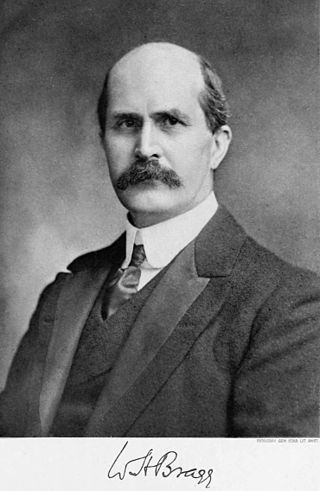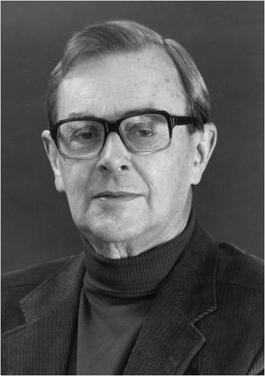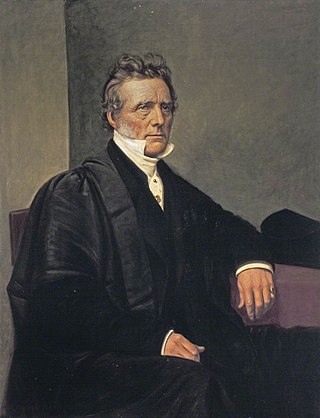Related Research Articles

King's College is a constituent college of the University of Cambridge. Formally The King's College of Our Lady and Saint Nicholas in Cambridge, the college lies beside the River Cam and faces out onto King's Parade in the centre of the city.

Sir William Henry Bragg was an English physicist, chemist, mathematician, and active sportsman who uniquely shared a Nobel Prize with his son Lawrence Bragg – the 1915 Nobel Prize in Physics: "for their services in the analysis of crystal structure by means of X-rays". The mineral Braggite is named after him and his son. He was knighted in 1920.

Clare Hall is a constituent college of the University of Cambridge, England. Founded in 1966 by Clare College, Clare Hall is a college for advanced study, admitting only postgraduate students alongside postdoctoral researchers and fellows. It was established to serve as an Institute of Advanced Studies and has slowly grown and developed into a full constituent college.

Sir James Ramsay Montagu Butler, was a British politician and academic. He was a member of parliament for Cambridge University from 1922 to 1923. He was Regius Professor of Modern History at the University of Cambridge from 1947 to 1954, and vice-master of Trinity College, Cambridge, from 1954 to 1960. He also saw military service during both the First and Second World Wars.

The Ascension Parish Burial Ground, formerly known as the burial ground for the parish of St Giles and St Peter's, is a cemetery off Huntingdon Road in Cambridge, England. Many notable University of Cambridge academics are buried there, including three Nobel Prize winners.

Martin Folkes, FRS was an English antiquary, numismatist, mathematician and astronomer who served as the president of the Royal Society from 1741 to 1752.

Sir David James Wallace, CBE, FRS, FRSE, FREng is a British physicist and academic. He was the Vice-Chancellor of Loughborough University from 1994 to 2005, and the Master of Churchill College, Cambridge from 2006 to 2014.

Sir Frank Edward Smith was a British physicist and Acting Director of the National Physical Laboratory between 1936 and 1937.

Sir Denys Haigh Wilkinson FRS was a British nuclear physicist.

Sir Alfred Brian Pippard, FRS, was a British physicist. He was Cavendish Professor of Physics from 1971 until 1982 and an Honorary Fellow of Clare Hall, Cambridge, of which he was the first President.
Anthony John "Tony" Badger is a British academic and historian. Until 2014 he was Paul Mellon Professor of American History at the University of Cambridge and Master of Clare College, Cambridge. He is a specialist in post-World War II Southern American political history.

Sir Robert William ChapmanMIEAust was an Australian mathematician and engineer.
Frank Horton FRS was professor of physics at Royal Holloway College, London University from 1914 to 1946 and later Vice-Chancellor of London University during the years of World War II from 1939 to 1945.

Gilbert Ainslie was an English academic and clergyman.

Alexander Hill was a medical doctor and professor who was Master of Downing College, Cambridge from 1888 to 1907 and Vice-Chancellor of the University of Cambridge from 1897 to 1899. He was Principal of Southampton University College from 1913 to 1920.

Sir Arthur Llewellyn Armitage, was a British academic who was the President of Queens' College, Cambridge, from 1958 until 1970, Vice-Chancellor of Cambridge University between 1965–67 and Vice-Chancellor of Victoria University of Manchester between 1969 and 1980.
George Arthur Weekes was a 20th-century British academic.
Edward Atkinson was Master of Clare College from 1856 to his death.
Isaac Newton University Lodge No 859 is a Masonic Lodge based at the University of Cambridge for matriculated members of the university. As of 2013 there were approximately 200 members. This is about half the 397 subscribing members in 1955. The lodge meets at Bateman Street Masonic Hall, with the lodge's badge or standard a combination of Isaac Newton's coat of arms and the University of Cambridge's coat of arms. The lodge is also a member of the Association of Medical, university, and Legal Lodges.
References
- ↑ Sir Henry Thirkill. The Times (London, England), Saturday, 27 March 1971; pg. 14; Issue 58132
- ↑ "Thirkill, Henry" . Who's Who & Who Was Who . Vol. 1920–2016 (July 2018 online ed.). A & C Black. Retrieved 30 July 2018.(Subscription or UK public library membership required.)
- ↑ "Provincial Grand Lodge of Cambridgeshire - Sir Henry Thirkill (1944 - 1969)".
- ↑ "CUCC Presidents".
- ↑ Memorial service. The Times (London, England), Monday, 24 May 1971; pg. 14; Issue 58180